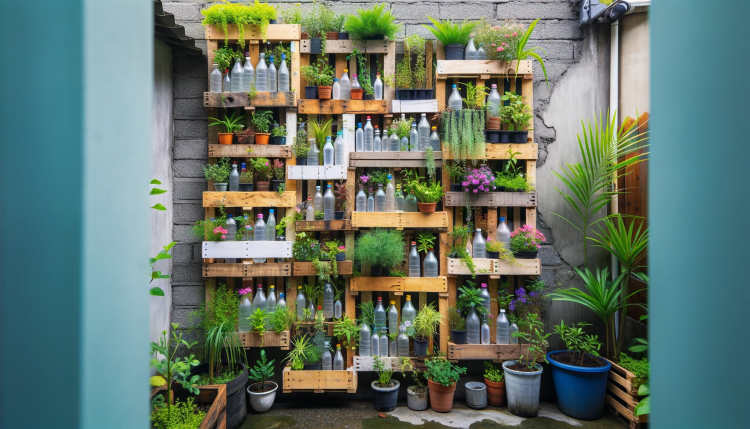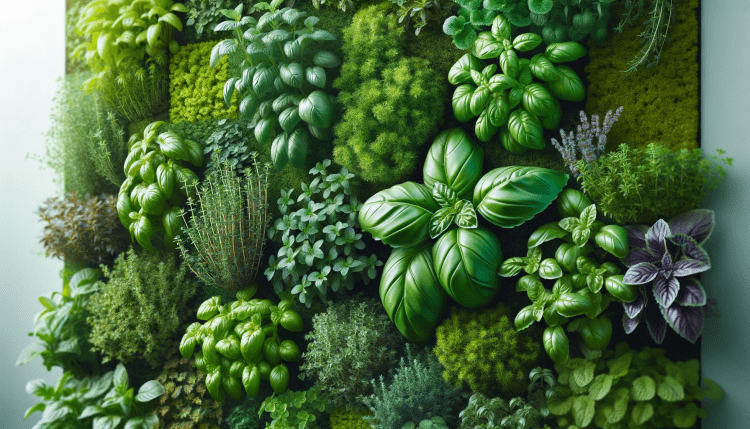
Vertical gardening is an innovative and space-saving approach to cultivating plants in urban and limited-space environments. It involves growing plants on vertical surfaces, such as walls or fences, rather than traditional horizontal garden beds. This blog post will explore the concept of vertical gardening, the best plants for it, and how to create and maintain a vertical garden.
Understanding Vertical Gardening
Vertical gardening is more than just a trend; it’s a practical solution to the challenges of limited space in urban settings. It involves utilizing vertical spaces for growing plants, which can include walls, trellises, hanging containers, or specially designed structures.
Benefits of Vertical Gardening:
- Space Efficiency: Ideal for small apartments, balconies, or patios.
- Aesthetic Appeal: Adds visual interest and beauty to urban environments.
- Improved Air Quality: Plants contribute to cleaner air and can help reduce pollution in city settings.
Selecting the Right Plants for Vertical Gardens
Not all plants are suited for vertical gardening. The key is to choose plants that thrive in the conditions provided by your vertical space.
Ideal Plants for Vertical Gardening:
- Succulents: Require minimal water and maintenance. Varieties like Sedum, Echeveria, and Sempervivum work well.
- Ferns: Shade-loving plants that add lush greenery to your vertical garden.
- Climbing Vines: Plants like Ivy, Clematis, and Morning Glory can naturally climb and cover vertical surfaces.
- Edibles: Certain herbs, strawberries, and trailing tomatoes can be successful in vertical gardens.
Designing Your Vertical Garden
Designing a vertical garden requires consideration of the structure and the environmental conditions:
- Sunlight: Determine the amount of sunlight the area receives and choose plants accordingly.
- Watering System: Consider installing a drip irrigation system for efficient watering.
- Support Structure: Use trellises, wall planters, or vertical gardening kits to create your garden structure.
Creating a Vertical Garden
Building a vertical garden can be a DIY project or a professionally designed installation:
- DIY Vertical Gardens: Use upcycled materials like pallets, plastic bottles, or fabric pockets.
- Professional Systems: These can include living walls or modular systems with built-in irrigation.
Maintenance Tips for Vertical Gardens
Proper maintenance is key to a thriving vertical garden:
- Watering: Ensure consistent moisture levels. Automated drip irrigation systems can be very effective.
- Pruning and Trimming: Regularly trim the plants to keep the garden looking tidy and to encourage healthy growth.
- Nutrient Management: Use liquid fertilizers or compost tea to provide nutrients, as soil in vertical gardens can be limited.
Environmental Impact of Vertical Gardens
Vertical gardens offer several environmental benefits:
- Urban Heat Island Effect Reduction: Plants in vertical gardens can help lower temperatures in concrete-heavy urban areas.
- Biodiversity: They provide habitats for birds, insects, and other urban wildlife.
- Air Quality Improvement: Plants filter pollutants and produce oxygen, improving urban air quality.
Overcoming Challenges in Vertical Gardening
While vertical gardening is innovative, it comes with challenges:
- Weight and Structural Integrity: Ensure the supporting wall or structure can bear the weight of the garden, especially when wet.
- Water Damage Prevention: Implement proper waterproofing measures to prevent water damage to walls or structures.
- Pest Management: Monitor for pests and treat appropriately, keeping in mind the vertical aspect of the garden.
Creative Ideas for Vertical Gardening Projects
There are countless ways to get creative with vertical gardening:
- Edible Walls: Grow a variety of herbs and vegetables for a fresh and functional display.
- Floral Artwork: Create patterns or designs with different colored flowering plants.
- Themed Gardens: Design a garden around a specific theme, like a pollinator garden with plants that attract bees and butterflies.
Community and Social Aspects of Vertical Gardening
Vertical gardens can foster community and social engagement:
- Community Projects: Involve local communities in creating large-scale vertical gardens in public spaces.
- Educational Opportunities: Use vertical gardens as educational tools in schools or community centers to teach about gardening and sustainability.
The Future of Vertical Gardening
Looking ahead, vertical gardening holds much promise:
- Innovation in Urban Design: As urban areas become denser, vertical gardens offer a way to integrate greenery into cityscapes.
- Sustainability Practices: They are seen as a component of sustainable urban development, helping cities become greener and more self-sufficient.
Vertical gardening is a dynamic and evolving field, blending horticulture with artistic expression and environmental stewardship. It opens up new possibilities for bringing nature into our lives, even in the most unlikely places. Whether you’re an experienced gardener or a beginner, vertical gardening offers a rewarding way to engage with the natural world in an urban setting.

DIY Guide to Creating a Vertical Garden
A vertical garden is a great way to bring greenery into urban or small spaces. It involves growing plants on a vertical surface, making it ideal for those with limited horizontal space. This guide will take you through the steps to create your own vertical garden.
Planning and Design
- Assess the Space: Measure the area where you want to install your vertical garden. Consider the amount of sunlight and exposure to the elements.
- Choose a Style: Decide whether you want a living wall, hanging containers, or trellis-style garden.
- Select Plants: Choose plants based on the light conditions and climate. Consider a mix of ferns, succulents, herbs, and flowering plants for variety.
Gather Materials
- Structural Materials: Depending on your design, this could be a wooden pallet, a metal grid, wall planters, or a trellis.
- Plants: Either seeds or nursery-grown plants.
- Potting Mix: Use a high-quality, well-draining potting mix.
- Other Supplies: Gardening gloves, a drill (if necessary), screws, landscape fabric, watering can, and fertilizer.
Preparing the Structure
- Frame Setup: If using a pallet or grid, ensure it’s secure and stable. Attach it firmly to the wall if it’s not freestanding.
- Adding Containers: If using containers, arrange them on the structure. Ensure they have drainage holes.
- Installing Landscape Fabric: For pallets, line the back with landscape fabric to prevent soil from falling out.
Planting
- Soil Filling: Fill containers or the frame with potting mix.
- Planting: Plant your chosen plants in the soil. For a pallet garden, start planting from the bottom up.
- Spacing: Ensure plants have enough space to grow. Plant smaller, trailing species at the top and larger ones at the bottom.
Maintenance
- Watering: Water your vertical garden regularly. The frequency depends on the plants and the environment.
- Feeding: Use a liquid fertilizer every few weeks during the growing season.
- Pruning: Regularly prune and deadhead to keep the garden looking its best.
- Pest Control: Keep an eye out for pests and diseases. Treat promptly if needed.
Optional Additions
- Irrigation System: For larger vertical gardens, consider installing a drip irrigation system for ease of watering.
- Lighting: Add garden lights to highlight the plants and extend viewing time into the evening.
Creating a vertical garden is a rewarding project that not only enhances the aesthetics of your space but also contributes to your well-being. Whether it’s a small herb garden in your kitchen or a large living wall on your balcony, the possibilities are endless. Happy gardening!
Remember, the key to a successful vertical garden is planning and choosing the right plants for your specific environment. With creativity and care, your vertical garden will thrive and transform your space.

Which Plants Can and Can’t Be Used in Vertical Gardening
In vertical gardening, while a wide range of plants can be used, not all plants are suitable due to their growth habits, size, root systems, and care requirements. Here’s a guide to help you choose the right plants for your vertical garden, along with some plants that are typically not recommended.
Suitable Plants for Vertical Gardening:
- Succulents and Cacti: Such as Echeveria, Sempervivum (Hens and Chicks), and Sedum. They are drought-tolerant and thrive in vertical settings.
- Ferns: Varieties like Boston fern and Maidenhair fern are great for shady vertical gardens.
- Herbs: Many herbs like Basil, Thyme, Rosemary, and Mint do well in vertical gardens, especially in sunny spots.
- Houseplants: Pothos, Philodendron, and Spider Plant are adaptable and can thrive in vertical setups.
- Trailing Plants: Plants like English Ivy, Creeping Jenny, and String of Pearls create a cascading effect.
- Edibles: Strawberries, lettuce, and some varieties of trailing tomatoes and peppers can be grown vertically.
- Annuals and Perennials: Begonias, Petunias, and Geraniums for sun; and Impatiens and Fuchsia for shade.
- Air Plants (Tillandsia): Require minimal soil and are excellent for vertical gardens.
Plants Typically Not Recommended for Vertical Gardening:
- Large Shrubs and Trees: Due to their size and root systems, they are not suitable for vertical gardens.
- Vegetables with Large Root Systems: Such as carrots, potatoes, and other root vegetables.
- Water-Heavy Plants: Plants that require a lot of water might not thrive unless the vertical garden has a very efficient irrigation system.
- Plants Requiring Deep Soil: Some plants need deeper soil for root development than what a vertical garden can typically provide.
- High-Maintenance Plants: Plants that require frequent pruning, repotting, or other care might be challenging to maintain in a vertical garden.
- Plants with Specific Growth Requirements: Some plants have very specific light, temperature, or humidity needs that might be hard to meet in a vertical setup.
When selecting plants for your vertical garden, consider the light, water, and soil requirements of each plant and make sure they match the conditions of your vertical space. It’s also important to think about the weight and structure of the vertical garden to ensure it can support the plants you choose.




